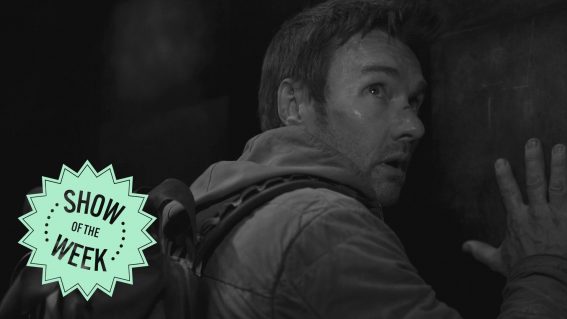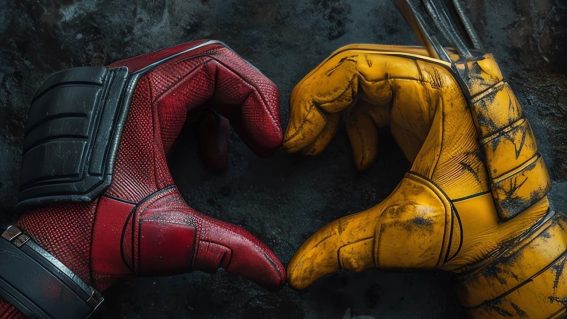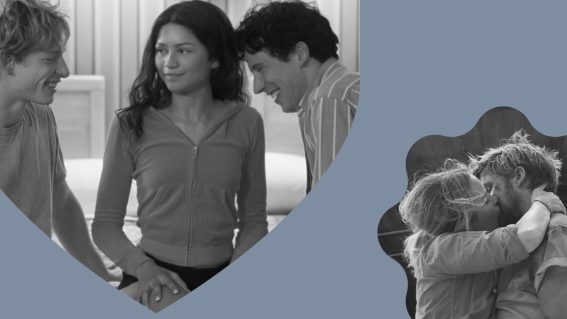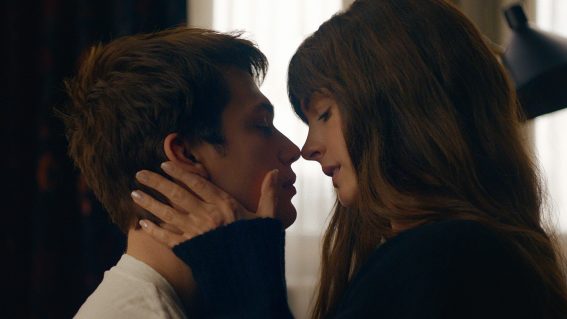Take A Second Look: M. NIGHT SHYAMALAN (Part 1)

Alright. Let’s be completely clear about this.
It is likely that M. Night Shyamalan has, in all probability, lost his freaking mind.
I am not ashamed to concede that point. Nor am I going to try to convince you of anything otherwise. If there is any example of a high-profile Hollywood director’s fall from grace, our man Manoj Nelliyatu Shyamalan (the “M. Night” being a professional affectation) is it. Certainly everyone can agree it is his most recent output that’s to blame for effectively ostracizing him from his ever-shrinking circle of fans (I myself bailed on him during The Happening). However…yes there is a however…movie audiences are reknown for their fickle disposition and emotionally charged attitudes. Audiences love to jump on bandwagons, whether they’re positive or negative, and Shyamalan (for a while) had a hate-wagon that could be seen from freaking space. To that degree, I personally feel that some of his so-called ‘lesser works’ have been unfairly treated by public attitude and – arguably – are more guilty of failing to find their audience rather than be just poor or bad movies. In short, there are a handful of Shyamalan’s films that are probably worth your time if you’ve never seen them (perhaps put off by his bad press) or are worth checking out again now that you can cleanse your palette from the misguided studio marketing and the guy’s own shattered credibility.
Walk with me and see if your opinion on some of these films still holds the same by the end of our journey. This article comes in two parts because I have a lot of stuff to talk about and I’m already ashamed of how long my blog posts are.
The primary problem with Shyamalan films is – believe it or not – something intrinsically tied to why die-hard fans of the guy loved him so much and stuck it out with him…that is until the unique point in which each individual person decided to jump from the sinking ship. It’s also the central reason why a lot of his film’s never quiet landed squarely in the laps of his ‘ideal audience’.

The guy’s methodology belies the strengths that he once brought as a filmmaker. His five-movie-long ‘golden age’ that encompassed The Sixth Sense (1998), Unbreakable (2000), Signs (2002), The Village (2004) and, arguably, The Lady In The Water (2006) present a textbook of exquisitely fine filmmaking technique: absolutely stunning photography, often extraordinary acting performances, off-beat and sometimes laugh-out-loud humour and astonishingly understated, almost domestic, stories that deal with larger-than-life events. He had stylistic trademarks that built up his reputation as a true auteur: expertly mixing genuinely scary supernatural horror with down-to-earth psychological human drama, often shooting scenes in long and complex single-takes without edits, featuring iconic moments where characters deliver powerful monologues, using highly evocative music and – to his eventual detriment – having a seeming obsession with plot-twists and surprise endings. Shyamalan had the aesthetics of an experienced, art-house, independent film director colliding at right-angles with the big, blockbuster, Hollywood genre sensibilities. This list of attributes is almost identical to only one other famous filmmaker in human history: Sir Alfred Hitchcock and quite rightly most of Shyamalan’s films almost feel as if old ‘Hitch’ is channeling through the guy right down to both directors famous penchants for doing on-screen cameos.
The cameos become an interesting metaphor for the differences in both directors’ careers. Where Hitchcock practiced restraint, Shyamalan attempted to evolve and move that one step further. Hitch’s cameos were limited only to background extra roles, walking past the camera, and our glimpses of him became more fleeting as he progressed in his career and got tired of the ‘gimmick’ altogether. Shyamalan went the opposite way by growing the size of his acting parts in his films until, by The Lady In The Water, he became a central character in the story. Hitch and Shyamalan’s career directions are equally dissimilar: Hitch was always happy to make pure, unabashed, suspense and thrillers i.e. films whose sole purpose was to scare the wits out of his audience for sheer entertainment value. Shyamalan’s goals were loftier, using the thriller format to make commentary about the human condition, spiritualism or society as a whole. Hitch plied his trade within the very rigid walls of pure Hollywood genre, but Shyamalan tried to subvert it for his own brand of cinema. And it was that ambitious desire which, one could argue, finally undermined him in the eyes of the public.
The problem with Shyamalan’s films is that they’re often one kind of film masquerading as another. In his attempt to subvert genre, Shyamalan writes seemingly straight-forward supernatural thrillers that are actually about completely different thematic ideas…and the problem is that the films are still marketed to the public as straight-forward supernatural thrillers. Unbreakable was the first prime example of this if you check out this trailer from 1999:
A man emerges from a trainwreck completely unharmed. Another man knows a secret about this event. It’s creepy, it’s spooky, it’s a mystery. But what the advertising doesn’t tell you is that it’s a freaking SUPERHERO movie! Unbreakable is actually the world’s most ‘realistic’ depiction of a super-powered hero to date and a cult-favourite of comic-book fans for over a decade…not that you could tell that by the film’s advertising or even the actual movie itself which presents the story as a knife-edge and, at times, intensely scary supernatural thriller.
This happens again in Shyamalan’s next film Signs – a film that is seemingly about crop-circles and the suggestion of extra-terrestrials, but in the last ten minutes of the movie you realize that the science-fiction horror trappings are actually a ruse and that you’re actually watching a movie about a man’s relationship with his God. The eponymous ‘signs’ are not references to the crop-circles featured in the movie’s advertising, but the divine signs that peppered the main character’s life and that finally make him realize that ‘everything happens for a reason’. For Shyamalan’s next film The Village, things severely got out of hand when the filmmaker himself came out to criticize the ‘horror movie’ marketing and focus on the ‘monsters’ in the movie which, again, were nothing more than a ruse to tell an interesting (if not fully-formed) allegory about society and the nature of evil. Shyamalan’s desire to control the marketing of his next film – The Lady In The Water – and other creative disputes instigated a move away from his ‘studio home’ at Disney and to setup a deal with Warner Bros who eventually produced the movie and prepared an advertising campaign that was more focused on its bedtime story/fable themes rather than the supernatural setup of the plot. Out of these five films only the The Sixth Sense seemed to gracefully touch down as a perfect landing, helped by the fact that the themes of the movie feed directly into the plot and don’t create a ‘movie pretending to be a different movie’ scenario (though, to be fair, the film’s brilliant handling of the human dramas between a mother and her son and a married couple is something you are not likely to see in your average ghost movie).

So what’s actually great about these five particular films?
Well, The Sixth Sense needs no introduction. It sits comfortably at an 85% ‘fresh’ rating on Rotten Tomatoes and on the Internet Movie Database’s top 500 films of all time. The film is a masterpiece of both horror and moving human drama and if you’re lucky enough to have not seen this film and not had the ending spoiled for you (i.e. what rock have you been living under?) then you owe it to yourself to rent this puppy and scare yourself silly (but pack a tissue in case you blub at the end). And if you’ve HAD the ending spoiled for you, you should still watch it because the movie still works beautifully and you’ll finally understand why that Haley Joel Osment got nominated for an Academy Award and was in a whole bunch of movies from that era before vanishing into the mists of time. Seriously, I can’t find anyone who hated this film when it came out (though a few have, very fashionably, found flaws in it ‘in hindsight’). No contest there.
Then comes Unbreakable.
Unbreakable is freaking bad-ass. I mean I can understand why people don’t see it that way; if you watch it expecting a cut-and-dry Hollywood supernatural thriller, you discover you’ve ended up in a comic-book movie. And if you watch it because your friends told you it’s an amazing movie about superheroes and comic books, you’re confused because it plays like a dark, scary, supernatural thriller. And on top of all that, you’ve got Shyamalan’s quasi-indie style with his very very long continuous takes, slow drama-focused buildup and that abrupt ending. Some audiences are just wired to reject that kind of film, but for Shyamalan fans this was like watching an Olympic athlete break a world record without breaking a sweat. As a film nut, this is what we hanker for: an original perspective.

Bruce Willis in "Unbreakable"
All things being equal, Unbreakable IS the world’s most realistic superhero movie: it deals with an ordinary man stuck in a deadbeat life (separated, poor, working a shitty job) who discovers that he has powers that could save lives and then has to deal with the repercussions it has on his relationship with his estranged wife and son. Imagine the kind of balls you’d need to have to make a superhero film where the majority of action takes place around a family’s kitchen table and where the movie’s only crime-fighting sequence is portrayed as a realistic scuffle without the use of special effects or over-the-top choreography. Then imagine the kind of ingenuity it would take for that movie to still thrill you because it treats its subject matter with the kind of serious examination that most comic-book films lack. Bruce Willis is superb as the likable, but lost, protagonist who rejects his superhuman powers because they won’t fix his problems or make him happy and Samuel L. Jackson delivers one of his greatest and most earnest performances which heightens the heart-breaking tragedy of his character. Like all of Shyamalan’s films, the film’s twist not only reveals the truth at the center of the story, but also surprises the audience by showing they’ve been watching a movie-disguised-as-another-movie all along and this particular surprise ending holds horrible ramifications for all the characters involved.
The film is also just pure class. It’s got the kind of cinematic vision that filmmakers dream about and wish they would some day have the freedom and creative spark to construct. Just look at the opening 2 and 1/2 minutes of the film – you’re making a movie called ‘Unbreakable’ and what do you do? You open in a department store changing room in the 1960’s where a woman has just given birth to her baby and the doctor comes to check on her. The entire scene is shot so the characters are talking to each other via the reflection of the changing room mirror in a single, continuous take, all the while the baby is screaming unnaturally. The doctor soon realizes that something is amiss and, examining the infant, finds that its arms and legs are both broken. And then the very next thing we see is the film’s title…the collision of the scene you’ve just witnessed and the film’s name which represents the exact opposite concept creates a kind of suspenseful foreshadowing that sucks you right into the film. That’s just bold, clever shit as we call it in the industry. Check it out for yourself:
http://www.youtube.com/watch?v=5E69-oJ7TDc
Then we have Signs.
Starring everyone’s favourite Jew-hater (sorry, couldn’t resist) Mel Gibson, Joaquin Phoenix and one of the interchangeable Culkin siblings, Signs is a claustrophobic tale of paranoia and horror about an American family in a remote farm which experiences an alien invasion of the Earth through radio, television and crop-circles that appear in their cornfield. Having lost his wife in a horrible automobile-related accident (committed by a character played by Shyamalan), Gibson is an ex-priest who has turned his back on God and struggles to hold his farm and his family together with the help of his goofy jock brother played by Phoenix.

Mel Gibon and Cieran Culkin in "Signs"
So let’s look at the obvious here. Signs is freaking scary. I can still remember the audiences SCREAMING their heads off on the three different times I saw it in the cinema. It is white-knuckle tension and classic sci-fi horror beautifully intermingled with genuinely laugh-out-loud comical moments, quirky off-beat characters and a moving drama about a family that still can’t move past the death of the mother. Out of all of Shyamalan’s films, Signs is the most like a Hitchcock film in the way it doesn’t take itself seriously and tries to wink at the audience, but it’s actually all a terrible plan to make you drop your guard before it scares the pants off you. It’s also Hitchcockian in how it grounds the fear that the characters experience on a domestic human level and turns the screws of tension by focusing on the breakdown of the family more than what threat the aliens pose. And when the aliens do turn up…well who can forget that famous ‘Bigfoot video’ moment when we first glimpse one of the creatures hiding in the bushes of a kid’s birthday party? I remember, during one session at the cinemas, a group of women got up from the front row and moved to the back of the cinema to get away from the screen after that scene came on.
http://www.youtube.com/watch?v=ZvB9pGmcWWw
Like The Sixth Sense, the movie could have been another Hollywood classic. A film worthy to stand side-by-side with other classic sci-fi thriller flicks like the original War Of The Worlds or the original The Day The Earth Stood Still. But this was not to be. Why? Because Signs is ultimately undermined by one catastrophic moment of bad-writing, in the last three minutes of the film, that is so nonsensical it almost breaks the entire film that came before it into pieces. If you’ve seen the movie then you know what it is. Shyamalan fans still scratch their heads and wonder how a film that strong could have a contrivance that unbelievably weak and I guess – for my part – it probably comes down to his ambition for what he wanted the film to be about which eroded what the film that it actually was. Signs is a quasi-religious movie about how Gibson’s character finds his faith in God again. Shayamalan is clever about this: presenting a plot-twist and deus ex machina moment without ever suggesting the existence of a God, but addressing that belief in a God is the same as having hope and that one should never, ever, lose hope. But the way that all of this comes about via a series of ‘signs’ that Gibson puts together in his head in the last moments of the film is clearly so important to the message Shyamalan wants to deliver that he must have felt he had to write an illogical science-fiction story with a stupid solution in order for that message to work. Signs isn’t perfect, we all admit this. And perhaps we lament that one tiny moment of poor creative problem-solving prevents such an astonishingly artistic and well-made film from getting the respect that it deserves, but at the same time we do appreciate that a lot of audiences find it hard to look past that one stumble to see the magnificently constructed piece of cinema that lay behind it.
Then there’s The Village.
The Village is my absolute favourite and to a degree I don’t understand the bad press this film. I think the packaging of this film has a lot to answer for and audiences were very savvy about what they thought they were going to get based on the marketing Disney had put up for it: a horror movie about a village threatened by monsters and a classic M. Night Shyamalan plot-twist. I can only imagine their disgust as they watched the film only to realize that the twist was that it wasn’t a horror movie and that the real monsters was humanity itself. To this day, I genuinely believe that if this movie was made by some unknown indie filmmaker, had done a year’s round in the film festival circuit and was advertised as a dramatic thriller, it would have had a very different reception.

Joaquin Phoenix in "The Village"
The Village was, believe or not, Shyamalan’s first film since his meteoric rise to fame to actually receive mixed reviews and moderate box-office performance. Both Signs and Unbreakable were critical and financial wins though neither could hold a candle to the globe-sweeping phenomenon that was The Sixth Sense. But for this very out-of-left-field double-metaphorical story about a 19th Century village’s relationship with mysterious and ferocious creatures that live in the woods that surrounds them on all sides, Shyamalan was arguably undone by the expectations he and Disney’s marketing team had setup in his target audience. People went to see a Shyamalan film to be scared, to be entertained and to try and figure out his next great plot-twist. They didn’t go to see hubris-riddled psychodramas about the nature of human society masquerading as a scary movie…and that’s a shame because as a film that stands on its own, The Village is absolutely magnificent.
….to be continued.
——————————————————————————————————————–
Coming up in Part 2 – I’ll tell you why I love The Village so much, I touch on Shyamalan’s quirky misstep The Lady In The Water and also balance out this journey by tasting the bitter, bitter, sweet merciful crap save us from these trainwrecks that were The Happening and The Last Airbender. Tune in next week!
















